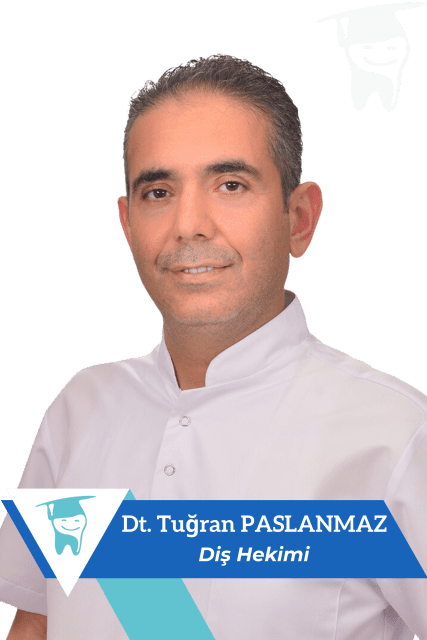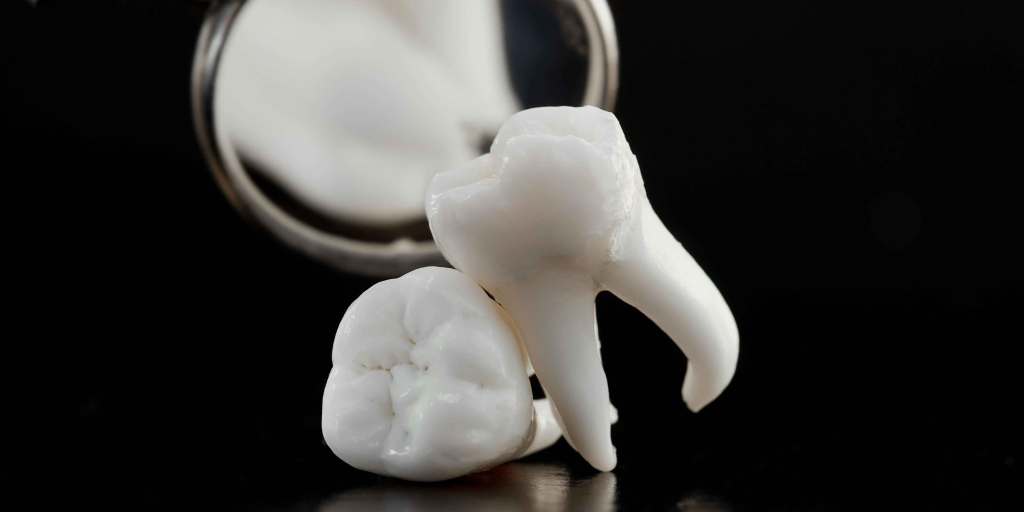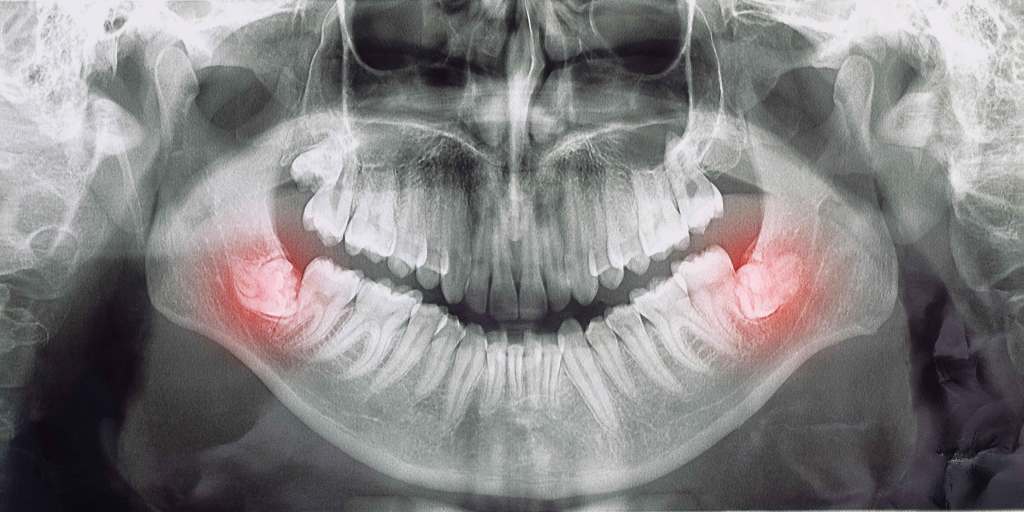
Wisdom Tooth Extraction

The wisdom tooth is also called the wisdom tooth, and the extraction of these teeth is a process that everyone can encounter in their life. Wisdom teeth are the last permanent teeth to erupt in the mouth and are also called wisdom teeth. The permanent teeth are 20 in total, 20 of these teeth take their place in the mouth during adolescence. The last 32-year-old teeth remain and there are 28 in total. These molars, located at the back of the jaws, are often difficult to drive into the mouth because they are not suitable for the jaw anatomy. Sometimes, the wisdom teeth, which take their place in the mouth without being felt, sometimes cause discomfort such as pain, swelling or abscess formation. The basis of the problems encountered lies in the lack of sufficient space on the jaw for the wisdom teeth. For this reason, it is planned to extract these teeth, which are considered as potential danger.
How Is Tooth Extraction Decided?

Before wisdom tooth extraction, the condition of the tooth should be evaluated in detail. Regular follow-up of wisdom teeth starting from the age of 20 is recommended. Wisdom tooth extraction can be as easy as a normal tooth extraction, and sometimes surgical interventions may be required. The condition of the tooth should first be determined by clinical examination in addition to panoramic x-ray or three-dimensional dental tomography. It may not be necessary to extract the teeth that are suitable for the jaw structure and have easily erupted into the mouth. However, sometimes wisdom teeth may erupt at the wrong angle or remain covered by the gingiva without giving any symptoms and may not be visible from the outside. With regular dental examination, the development and eruption direction of the tooth can be followed. Necessary interventions can be made without causing any adverse effects on the wisdom teeth under follow-up, jawbone or adjacent teeth.
Impacted Wisdom Teeth

Wisdom teeth may remain embedded by being surrounded by gum or bone, depending on their condition in the jaw. Teeth that are partially covered with gingiva often form a focus of infection. The resulting infection can cause swelling in the cheek, pain and difficulty in jaw movements. It is very difficult to adequately clean the wisdom teeth in an inaccessible area with tooth brushing. For the same reason, it is difficult to administer curative treatments in case of decay or infection of these teeth. Wisdom teeth should be extracted as soon as symptoms such as pain, infection, abscess or swelling are encountered. Otherwise, recurrent infections cause tissue destruction in the jawbone and teeth.
Side Effects of Wisdom Teeth
Wisdom teeth can create a repulsive force from the back of the tooth row, causing the teeth in the anterior region to be compressed and become crooked over time. In people who have a healthy and aesthetic smile until the age of 20-18, the source of orthodontic disorders that occur after these ages are generally considered to be wisdom teeth. At the same time, areas that are difficult to clean often occur at the points where the wisdom teeth rest on the adjacent molars, and decays are observed in these areas.

Frequently Asked Questions About 20-Year-Old Teeth
Teeth develop in the jawbone and progress into the mouth over time. During riding, they must first pass the bone tissue and then the gingiva. However, some teeth cannot pass both layers or only the gingival layer. In this case, the remaining teeth are called impacted or impacted teeth.
Not all wisdom teeth need to be extracted. Teeth that do not harm the adjacent teeth, do not compress the jawbone, can be cleaned in the mouth or are in an impacted state can be followed at regular intervals. However, if the wisdom tooth has lost material as a result of decay or fracture and cannot be treated with filling, root canal treatment, veneer or other treatment methods, it should be removed. Wisdom teeth that are not removed in a timely manner can damage the adjacent teeth, impair the tooth sequence by jamming in the jaw bones, and cause infection in the bone. For this reason, it is important to follow the wisdom teeth regularly.
This method may sound scary. Surgical tooth extraction is the method applied in cases where the teeth cannot be easily reached in the mouth. Impacted teeth under the gingiva or in the bone are removed with this method. Like a normal tooth extraction, the area is numbed with local anesthesia. For an experienced physician, it is no different from a standard tooth extraction.
The information below are recommendations that should be followed under normal conditions. Your doctor may make different recommendations based on the procedure applied to you. Please first consider the advice of your doctor.
- The tampon placed on the surgical area should be bitten tightly for an average of 15-30 minutes. If bleeding continues, this process can be repeated. If it does not continue, the bumper can be removed.
- In order to reduce swelling and edema, cold application should be applied to the surgical area at 10-minute intervals. Applying cold on the same area for more than 10 minutes can cause burns on the skin, so a break should be taken.
- Eating and drinking is not recommended for 3-4 hours after the procedure. When the numbness caused by the anesthesia begins to pass, warm and soft foods can be started.
- Smoking should not be consumed in the first 20 hours after the age 48 surgery.
- Hot, acidic and alcoholic foods should be avoided within the first 24 hours after extraction. It is also necessary to avoid grinding food with the operated side.
- In order not to adversely affect the health of the clot in the tooth extraction area, spitting, sucking and shaking movements should be avoided.
- The foreign body, finger or tongue, and the cavity area formed as a result of tooth extraction should not be confused.
- It is recommended to sleep with a high level pillow on the first night after surgery.
- Surrounding teeth and gingival tissues should be brushed with a soft toothbrush without damaging the surgical area. After 24 hours after the procedure, the surgical area can be brushed with a soft toothbrush.
- After 24 hours, warm mouthwash can be started with salt water.
- Prescribed medications should be taken and used according to the doctor's recommendations.
Generally, the first 24 hours after impacted tooth surgery is a bit difficult. Swelling may occur in the wisdom tooth extraction area and bleeding in the form of leakage may continue. After the effect of the anesthesia wears off, tingling or pain may begin. It is quite normal to experience these situations. In case of non-stop bleeding, severe pain and excessive swelling, it is recommended to consult your doctor.
Wisdom teeth are diagnosed by taking a dental x-ray in our patients who show pain, swelling or other symptoms in the mouth. This X-ray shows the roots, bone structures, angles and impacted teeth of the teeth. Invisible, horizontally protruding or semi-impacted teeth are detected on the x-ray. Our doctors examine the dental x-ray and decide whether it should be removed with normal tooth extraction or surgical operation.
Some impacted teeth are noticed by infection or cyst formation. In such a case, drug treatment is applied before tooth extraction and then an appointment is made for wisdom tooth extraction.
Teeth that have enough space in the back of the mouth in the lower and upper jaws and come out in a healthy way do not cause any problems. But often, problems occur because there is not enough space for these teeth. Among the signs of wisdom teeth, the most common are:
- Pain in the tooth and gum
- Sensitivity in the gums
- Pain in the ear and jaw
- Swelling in the lymph nodes
- Having a bad odor in the mouth
- Pain while chewing
In our patients between the ages of 17-25, such symptoms are usually caused by wisdom teeth and the complications caused by this tooth. It is recommended that our patients who experience these symptoms apply to our polyclinic as soon as possible.
For toothache, it is generally recommended to gargle with warm and salt water. Add a tablespoon of salt to a glass of water and mix. Gargle with this water. If swelling is the cause of the toothache, ice application is recommended. Adding clove oil to a piece of cotton and holding it around the gums and teeth can also help relieve pain. It is also good to gargle by mixing baking soda with warm water. But if the pain persists, medication for wisdom toothache is best.
The last teeth, called wisdom teeth, usually appear at the back of the jaw between the ages of 17 and 25 or try to come out. However, due to the effect of genetic factors, these teeth may erupt earlier or later. In some people, it can occur even at the age of 16, while in others, there is a possibility of tooth eruption even in a person who has lost teeth until the age of 70 and uses dentures.
Wisdom teeth are teeth known as upper molars that usually grow under the gums and inside the jawbone. However, these teeth may need to be extracted in some cases. Here's what you need to know about when mental teeth should be extracted:
- Early withdrawal may be more appropriate
As age progresses, the jaw bones lose their flexibility and it becomes more difficult to extract wisdom teeth. Therefore, it is more appropriate to withdraw it when young. In addition, as age progresses, the possibility of numbness and numbness in the lip after tooth extraction increases.
- Should be withdrawn immediately in cases of infection
In cases such as wisdom tooth abscess, gingival swelling and infection, the tooth may need to be extracted. Under the gum is the follicle, which is a protective membrane of these teeth. Infection may occur in this area while trying to erupt the tooth, and the gums swell and cause pain. Also, the infection can cause bad odor and taste.
- May Create Crowding Problem
Wisdom teeth can be difficult to clean because they are located behind other teeth. The toothbrush cannot reach this area and over time, bruises may occur here. In addition, when these teeth are trying to come out, it can cause crowding in the front teeth because the area is narrow.
- May Cause Cyst Formation
When wisdom teeth are not extracted, a cyst may form around the tooth. These cysts can cause damage to the bones and gums. In some cases, the patient may have no complaints, but cysts arising from impacted teeth may be observed on x-rays.
- May Cause Caries
Wisdom teeth can damage the front teeth due to the narrow area they are in when they come out and can cause problems in the root by pressing on the root of the molars. Also, nutrient embeddings can occur here and lead to cavities over time.
- Cheek Sinking Problem
Wisdom teeth put pressure on neighboring teeth when they are erupting, and they can sometimes sink into the cheek and cause infections.
Wisdom teeth can cause oral and dental problems such as gingivitis, tooth decay, nutrient accumulation, enamel and root tissue loss in neighboring teeth. For this reason, in addition to impacted or semi-impacted teeth, teeth that cause congestion in the mouth even though they come out properly should be removed with wisdom tooth extraction without surgery. The 20-year-old tooth extraction price differs from the normal tooth extraction price depending on the condition of the tooth, and it needs to be examined to give an exact price.
To decide how to extract these teeth, an X-ray of the tooth is taken first. Teeth that come out properly but need to be extracted due to caries or congestion in the mouth can be extracted with a simple procedure such as the extraction of other teeth. However, the vast majority of problematic teeth are extracted by dental surgery, which is a surgical procedure. In more advanced cases, different tooth correction methods should be considered.
Wisdom teeth can be more difficult and complex than extraction of normal teeth. Extraction of impacted or semi-impacted teeth usually requires surgical operation, while extraction of normal teeth can be performed without surgery. Depending on the location, size of the wisdom teeth and the thickness of the tissue they cover, the difficulty of tooth extraction differs. Therefore, after a dental x-ray is taken, dentists determine the extraction method of the tooth. However, if the position and size of the wisdom teeth are normal, the extraction process is performed in the same way as normal tooth extraction.
The treatment of wisdom teeth is a process that can be difficult. If there are serious problems with the teeth, there may be situations that require surgical intervention. However, before surgical intervention is required, if there are recurring problems in the teeth, it is tried to be treated. However, if the problems persist despite treatment, tooth extraction becomes inevitable.
Some complications may occur after extraction of wisdom teeth. Therefore, patients should avoid hot and cold foods. In case of bleeding, it is necessary to avoid chewing in the area where the tooth is extracted for 24 hours. In addition, brushing teeth should be done carefully. It may also be necessary to give more importance to oral hygiene.
20-year-old teeth are teeth that are usually impacted in the jawbone. Because they are covered with gum or bone, they can cause infections and related facial swelling or a decrease in jaw opening. Recurrent infections can lead to osteoporosis and inflammatory tissue formation. In addition, they can cause pain and crowding by putting pressure on the anterior teeth due to their position. Wisdom teeth are usually surgically extracted and problems such as swelling and pain may occur after extraction, especially if there is gum or bone tissue.
Wisdom teeth are not found in every mouth, and in some people they do not form at all. Wisdom teeth can erupt normally like other teeth if there is enough space in the jawbone. However, if there is not enough space in the mouth, the teeth may remain in the impacted or semi-impacted position and cause gum infections, clenching of other teeth, bad breath and other problems. In this case, wisdom teeth may need to be removed.
Wisdom teeth are teeth surrounded by bone and gingival tissue in the mouth. However, in some cases, they cannot come out in the correct position due to the size, location of the tooth or other teeth around it and remain embedded. Impacted teeth are formed when the tooth is covered only by bone tissue or by both bone and gingival tissue. Impacted teeth may need to be extracted as they can cause congestion, pain, infection, cavities or other dental problems.
Not all wisdom teeth need to be extracted. If the wisdom tooth is painlessly and uneventfully located in the mouth and does not damage the surrounding tissues, it is not necessary to be removed. However, if the wisdom tooth is harmful to oral health or is in a position that could potentially cause problems in the future, it may be recommended to be removed. For this reason, whether wisdom teeth will be extracted or not may vary depending on the oral structure and dental health of each individual.
20-year-old tooth extraction prices may vary depending on the location, condition and extraction method of the tooth. For this reason, you should talk to your dentist and be examined to specify a clear fee for mental tooth extraction.
